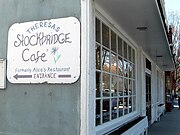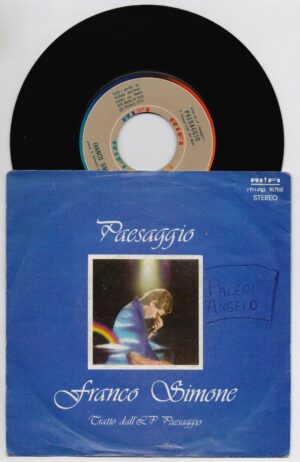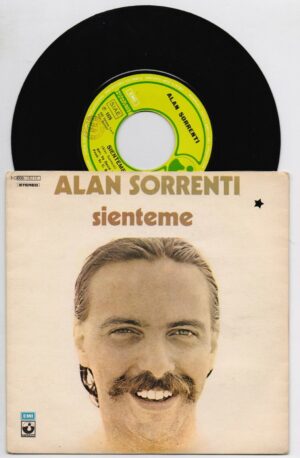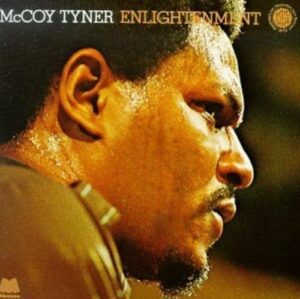|
“Alice’s Restaurant” è la più famosa canzone di Arlo Guthrie, il figlio di Woody Guthrie.
È una canzone che racconta una storia, basata su avvenimenti veramente
accaduti, che dura 18 minuti e 20 secondi ed occupa infatti l’intera
facciata A dell’album di debutto di Arlo Guthrie, del 1967, anch’esso
intitolato Alice’s Restaurant.
La canzone fu adattata nel 1969 in un film, anch’esso intitolato Alice’s Restaurant diretto da Arthur Penn, con lo stesso Guthrie nella parte di se stesso e Patricia Quinn nella parte di Alice, mentre alla vera Alice era riservato un cameo.
La canzone è una pungente satira contro la leva obbligatoria durante la guerra del Vietnam e racconta un’avventura vera (ma un po’ esagerata per aumentare l’effetto ironico) accaduta un Giorno del Ringraziamento.
L’avventura iniziò appunto al ristorante di Alice, dove “puoi avere
quello che ti pare (tranne Alice)”. Alice era la proprietaria del
ristorante Alice Brock, che viveva in una chiesa sconsacrata a Great Barrington, Massachussets. La canzone racconta di come Guthrie fu processato per aver illegalmente scaricato della spazzatura
di Alice dopo aver scoperto che la discarica comunale era chiusa per il
giorno del Ringraziamento, e di come a causa di questo crimine che
risultava sulla fedina penale, fu successivamente rifiutato e
dichiarato non abile per il servizio militare, quando fu richiamato
nell’esercito.
I personaggi della storia, compreso Alice e l’agente Obie che lo
arrestò, divennero famosi in seguito alla canzone. L’agente Obie fece
la parte di sé stesso nel film, sembra perché preferiva fare lui stesso
la parte dello stupido pittosto che vedere qualcun altro che faceva la
parte dello stupido con il suo nome.
Alcune stazioni radio
americane suonano Alice’s Restaurant regolarmente per ogni giorno del
Ringraziamento. Non è invece suonata spesso al di fuori delle occasioni
speciali, per la sua durata poco radiofonica.
La prima registrazione di Alice’s Restaurant faceva parte di un album pubblicato nel 1967 e raggiunse il #17 delle classifiche Billboard. Il film tratto da “Alice’s Restaurant” fu pubblicato il 19 agosto 1969, pochi giorni dopo il festival di Woodstock a cui Guthrie aveva preso parte suonando la canzone.
“Alice’s Restaurant” fu riveduta e aggiornata alcuni anni dopo in riferimento alla politica di Reagan,
ma questa seconda versione non è stata pubblicata su nessun album.
Esistono anche diverse parodie della canzone. Guthrie stesso scrisse
anche un seguito raccontando che Richard Nixon
possedeva una copia della canzone, e suggerendo per scherzo che questo
spiegava i famosi 18 minuti e mezzo di silenzio nei nastri dello scandalo Watergate.
Nel 1991, Guthrie ha comprato la chiesa dove aveva abitato Alice Brock, che era stata resa famosa dalla canzone, e la trasformò nel Guthrie Center, un luogo di incontro intereligioso.
The song
Guthrie’s talk-song, a satirical, deadpan protest against the Vietnam War draft
and widespread anti-hippie prejudice, recounts a true but comically
exaggerated Thanksgiving adventure. “Alice” was restaurant-owner Alice
M. Brock, who in 1964, using $2,000 supplied by her mother, bought a deconsecrated church in Great Barrington, Massachusetts, where Alice and her husband Ray would live. It was here rather than at the restaurant, which came later, where the song’s Thanksgiving dinners were actually held.
On that Thanksgiving, November 25, 1965, the 18-year-old Guthrie and his friend Richard Robbins, 19, were arrested for illegally dumping some of Alice’s garbage after discovering that the dump was closed for the holiday. Two days later they pleaded guilty in court before a blind judge,
James E. Hannon; the song describes to ironic effect the arresting
officer’s frustration at the judge being unable to see the “27 8-by-10
color glossy pictures with the circles and arrows and a paragraph on
the back of each one explaining what each one was to be used as
evidence against us”. In the end, Guthrie and Robbins were fined $50
and told to pick up their garbage.
The song goes on to describe Guthrie’s being called up for the draft, and the surreal bureaucracy at the New York City induction center on Whitehall Street.
Because of Guthrie’s criminal record for littering, he is first sent to
the Group W Bench (where convicts wait) then outright rejected as unfit
for military service. The ironic punchline of the story’s denouement
is that, in the words of Guthrie, “I’m sittin here on the Group W bench
‘cause you want to know if I’m moral enough to join the army, burn
women, kids, houses and villages after bein’ a litterbug?”
The final part of the song is where Arlo tells the audience that
should they find themselves facing the draft they should walk into the
military psychiatrist’s office and sing, “Shrink, You can get anything
you want, at Alice’s restaurant,” and walk out. Thus is born, “the
Alice’s Restaurant Anti-Massacree Movement, and all you got to do to
join is sing it the next time it comes around on the guitar.”
“Alice’s Restaurant” is regularly played on Thanksgiving by many radio stations,
especially in the New York City and Boston areas. It is not often
otherwise aired, due to its length. The original album rose to #17 on
the Billboard chart.
Guthrie revised and updated “Alice’s Restaurant” years later to protest Reagan-era policies, but this second version has not been released on a commercial recording.
Guthrie later wrote a follow-up recounting how he learned that Richard Nixon had owned a copy of the song, and he jokingly suggested that this explained the famous 18½ minute gap in the Watergate tapes. Guthrie rerecorded his entire debut album for his 1997 CD Alice’s Restaurant also known as Alice’s Restaurant: The Massacree Revisited, on the Rising Son music label, which includes this expanded version.
The real Alice’s restaurant
“Alice” was restaurant owner Alice M. Brock, who with husband Ray Brock lived in a former church in Great Barrington, Massachusetts, where the song’s Thanksgiving dinners were actually held. She was a painter and designer, while Ray was an architect and woodworker. Both worked at a nearby private academy, the music– and art-oriented Stockbridge School, from which Guthrie (then of the Queens, New York City neighborhood of Howard Beach) had graduated.
Alice’s restaurant (formally known as the “Back Room Rest”, named
for its location down an alley behind a grocery store at 40 Main Street
in Stockbridge, Massachusetts) was roughly six miles from the church — though true to the song, it was “just a half-a-mile from the railroad
track”. Formerly Maluphy’s Restaurant, it ran the length of the
building from front to back along the side alley. Owned by Alice for
only a year before she and Ray divorced, it was, as of 2005, Theresa’s
Stockbridge Cafe, where a hand-painted sign indicates its former
identity. The building’s front as of 2006 is The Main Street Cafe.
The song and a subsequent movie (see below) made both Alice and Stockbridge police chief William Obanhein
(“Officer Obie”), who arrested Guthrie, marginally famous. Obanhein, in
addition, had previously posed twice for the famed local artist Norman Rockwell (“The Runaway,” 1958), and appeared in print advertisements for Massachusetts Mutual Life Insurance and for Goodwill Industries.
The movie
The song was adapted into the 1969 movie Alice’s Restaurant, directed and co-written by Arthur Penn and starring Guthrie as himself, Pat Quinn as Alice Brock and James Broderick as Ray Brock, with the real Alice making a cameo appearance.
The movie version of “Alice’s Restaurant” was released on August 19, 1969, a few days after Guthrie appeared at the Woodstock Festival.
The church
Originally built as the St. James Chapel in 1829, the structure was
enlarged in 1866 and renamed Trinity Church. Ray and Alice Brock
purchased the property in 1964 and made it their home. The building has
had several owners since the early 1970s.
In 1991,
Guthrie bought the church that had served as Alice and Ray Brock’s
former home, at 4 Van Deusenville Road, Great Barrington,
Massachusetts, and converted it to the Guthrie Center, a
nondenominational, interfaith meeting place.
The church’s exterior is covered with white vinyl siding with the
original cornerstone dedications still intact. There are two public
entrances, a ramp for disabled guests on the side of the building and
another consisting of two large wooden doors. The entrance from the
side leads directly into the chapel. The front entrance leads into a
living room with couches and a kitchen to the left. Bathrooms are
located down a straight hallway to the right. Above this hallway is a
sign that says ” One God – Many Forms One River – Many Streams One
People – Many Faces One Mother – Many Children -Ma”.
In the main chapel area there is a stage for performances set up
with microphone and other audio inputs. On the stage, in the rear
center, Officer Obie’s chair sits as a reminder of the arrest. In the
rear of the chapel there is a set of stairs and a loft which holds a
shrine dedicated to multiple religions and also contains a viewing
loft. Also, there is a door that leads to a set of private rooms in
which Alice and Ray once lived.
In recent years, the Guthrie Center has become a popular folk music
venue, hosting the Troubadour Concert series annually from Memorial Day
to Labor Day. Musical guests have included John Gorka, Jaane Doe, The
Highwaymen and, of course, Arlo Guthrie. The annual “Garbage Trail
Walk”, retracing the steps of Arlo and folksinger Rick Robbins (as told
in the song), raises money for Huntington’s Disease research. On
Thanksgiving, the Center hosts a “Thanksgiving dinner that can’t be
beat” for people in need from the local community.
The real Alice
As of 2005, Alice Brock lives in Provincetown, Massachusetts, and owns an art studio and gallery at 69 Commercial Street. She illustrated the 2004 children’s book Mooses Come Walking, written by Guthrie.
Il menestrello hippie ha trasformato il locale in una chiesa multi religiosa: «Perché nessuna è superiore all’ altra»
A messa dal pastore Arlo Guthrie nel «Ristorante di Alice»
Il menestrello hippie ha trasformato il locale in una chiesa multi
religiosa: «Perché nessuna è superiore all’ altra» A messa dal pastore
Arlo Guthrie nel «Ristorante di Alice» DAL NOSTRO CORRISPONDENTE NEW
YORK – «Puoi avere di tutto nel Ristorante di Alice. Entra pure, è
dietro l’ angolo. A mezzo miglio dalla stazione. Si può avere di tutto
nel Ristorante di Alice». Trentacinque anni dopo aver scritto la
leggendaria ballata che l’ ha trasformato in una delle icone hippie
della controcultura americana degli anni ‘ 60, Arlo Guthrie è tornato
nella sua adorata chiesa-ristorante. Ma questa volta in veste di
pastore interreligioso con all’ attivo dozzine di matrimoni. Il suo
ristorante di Alice oggi si chiama «Guthrie Center» ed è un tempio
«alternativo» della fede con pavimenti di moquette colorata, spazi per
la meditazione, classi di cucina per handicappati, concerti e gruppi di
gioco per bambini che si avvale anche di un popolarissimo sito
Internet, www.guthriecenter.org, per promuovere la tolleranza tra
religioni diverse. Di fronte all’ altare spoglio e privo di simboli
(«per non offendere nessuno», spiega Guthrie), padre Arlo officia
battesimi e matrimoni, bar mitzvah (cerimonia ebrea), e funerali. La
gente corre a frotte in quest’ angolo del Massachusetts, Great
Barrington, che ormai appartiene alla leggenda. Si tratta infatti della
stessa chiesa sconsacrata dove viveva Alice, l’ insegnante liceale di
Guthrie cui è dedicata la famosa canzone del ‘ 67 – e l’ omonimo,
popolarissimo film del ‘ 69 – che parla dell’ arresto, avvenuto
davvero, di Guthrie, per aver buttato via senza permesso sanitario una
montagna di rifiuti che si erano accumulati nella chiesa. Il gesto
illegale gli macchiò la fedina penale, facendolo miracolosamente
escludere dalla guerra del Vietnam. Invece di andare a morire al fronte
insieme a tanti giovani coetanei, il figlio di una ballerina ebrea e
del mitico cantante folk Woody Guthrie (l’ autore di ballate
leggendarie come This Land is your land e So long, it’ s been good to
know you), diventò il portavoce di un’ intera generazione. Tanti anni
più tardi, nel ‘ 91, quando la chiesa venne messa in vendita per 300
mila dollari, Guthrie non si è fatto sfuggire l’ occasione. «La mia
sorte è legata per sempre a quel luogo», racconta il cantante,
costretto ad esibirsi in tournée dieci mesi all’ anno per pagare il
mutuo della chiesa che ospita anche la «Guthrie Foundation», dedita, si
legge nel sito, «a proteggere le culture indigene della terra che
rischiano di estinguersi per colpa della globalizzazione». Ma la vera
vocazione di Guthrie, oggi, è religiosa. Dopo aver esplorato le radici
ebraiche – sua nonna materna Aliza Greenblatt era una poetessa yiddish
di origine russa -, dopo aver vissuto per mesi con i monaci francescani
e meditato per anni con quelli buddisti, il cinquantacinquenne cantante
ha scoperto il vero Dio grazie a Ma Jaya Sati Bhagavati. «La guru –
spiega – che mi ha insegnato la pratica indù di abbracciare tutte le
religioni. Perché nessuna è superiore all’ altra e tutte si
completano». «Io pratico tre o quattro religioni contemporaneamente –
spiega il prete-rabbino-iman Guthrie – perché mi offrono tutte approcci
diversi della stessa realtà». L’ ultima crisi mistica fricchettona di
un ex hippie in crisi? «Niente affatto – replica il cantante – gli
attacchi terroristici dell’ 11 settembre hanno dimostrato ciò che io
professo da tempo. E cioè che il fondamentalismo zelota è il nemico
numero uno dell’ umanità. E che il valore più alto, oggi, è la
tolleranza reciproca». Il santuario, riconsacrato all’ inizio degli
anni ‘ 90, è anche un tempio alla memoria dei suoi celebri genitori,
cui Guthrie dice di «dovere tutto quello che so sulla fede». E racconta
di quando, da piccolo, la sorellina Cathy rimase mortalmente ustionata
in un incendio. «Mamma la portò di corsa all’ ospedale – ricorda oggi
l’ ex hippie -, dove, all’ arrivo, l’ infermiera le chiese quale
religione doveva scrivere nel modulo. “Tutte”, replicò lei. E quando
quella disse che non era possibile le ordinò di mettere “nessuna”. Papà
arrivò venti minuti più tardi e senza essersi mai consultato con mamma
ripeté esattamente la stessa frase». Tra una ballata e l’ altra papà
Woody si dilettava a studiare i classici della religione, dalla Bibbia
al Talmud, dalla Torah al Bhagavad-Gita. «Ricordo che riempiva i libri
di annotazioni scritte a matita – spiega oggi il figlio – e che era
orgoglioso di poter tenere testa al suocero, uno studioso di cultura
yiddish ed ebraica». Il suo sito oggi è visitato da gente di tutto il
mondo, italiani inclusi. «Molti continuano a pensare ad Arlo Guthrie
come all’ hippie felice degli anni ‘ 60 – racconta – in fondo questa
eredità non mi dispiace. La mia generazione si è battuta per dei valori
giusti e morali e molti, tra noi, continuano a farlo». Alessandra
Farkas You can get anything you want at Alice’ s Restaurant/ Walk right
in, it’ s around the back/ Just a half a mile from the railroad track/
You can get anything you want/ at Alice’ s Restaurant (Puoi avere di
tutto nel Ristorante di Alice/ Entra pure, è dietro l’ angolo/ A mezzo
miglio dalla stazione/ Si può avere di tutto nel Ristorante di Alice)
LA STORIA FIGLIO D’ ARTE Figlio del grande Woody che inventò la figura
del moderno cantautore, Arlo Guthrie crebbe all’ interno dell’ ambiente
del Greenwich Village. Guthrie era soprattutto un menestrello gioviale
che ironizzava sulle vicende contemporanee LE BALLATE Il suo forte
erano le ballate che raccontavano storie paradossali di adolescenti
ribelli: oltre ad Alice’ s Restaurant (1967), famosa Motorcycle Song
(1969), il satirico ritratto dell’ easy-rider
|










